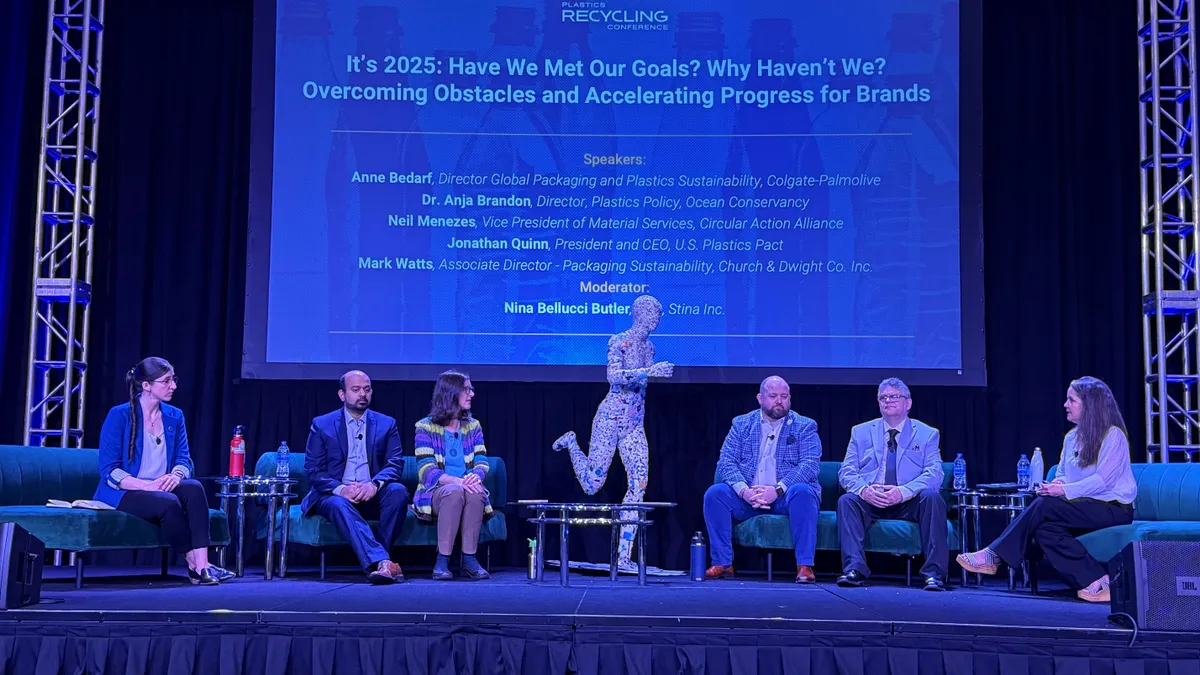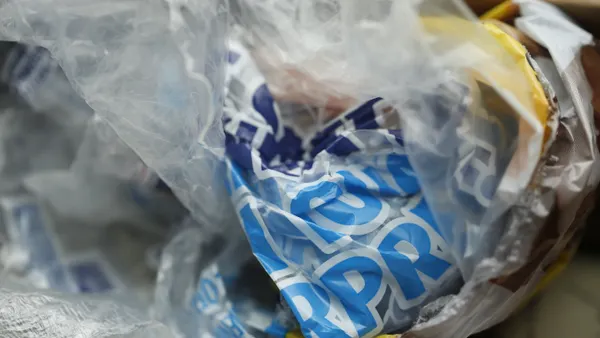After finishing a delicious cup of joe from your local coffee shop, where do you place the Styrofoam to-go cup: in the trash or in the recycling bin?
The answer may depend on where you live.
A debate over the recyclability of Styrofoam has sparked in cities across the nation, most notably New York City, which banned Styrofoam on July 1 due to the belief that it cannot be "fully recycled." While the ban won't be enforced until Jan 1., restaurant owners and foam product makers are battling with Mayor Bill de Blasio's administration, saying that Styrofoam is recyclable and it is too expensive to use alternative products.
"Denying foam’s recyclability is like denying the sky is blue. It just doesn’t make sense," said Restaurant Action Alliance leader Robert Jackson in a statement. He, along with 1,000 restaurant owners and Dart Container Corp., is fighting to overturn the ban.
However, more than 100 municipalities have banned Styrofoam — properly known as polystyrene foam, or foam #6 for the code stamped on the product.
A map made by Groundswell shows the states with cities that have enforced bans in order to push for environmental sustainability. Such cities include Seattle, Washington, D.C., San Francisco, and Portland, ME.
So, which argument is correct?
The argument for recycling
Dart Container, the world’s largest maker of foam cups and containers, notes on its website: "Foam #6 is a thermoplastic, which means that it can be completely recycled. In order to make an unqualified claim of recyclability, the Federal Trade Commission has stated that a 'substantial majority' (~60%) of the public must have access to recycling infrastructure."
Therefore, Dart Container defends that polystyrene foam is recyclable, but the U.S. isn't entirely ready to make recyclable claims on the product just yet.
Dart lists more than 50 businesses that accept post-consumer #6 foam. The company also partners with various manufacturers to turn "post-industrial and post-consumer foam" into products like picture frames.
Cities that recycle
Although many cities have already banned the product, other cities have aligned with the values of Dart Container Corp. by recycling the product, which Dart claims is a "very easy" process. The following cities are just some that have implemented foam recycling programs:
- Los Angeles: Los Angeles is the largest U.S. city to allow curbside pickup of clean Styrofoam.
- Baltimore: In Baltimore, residents can drop off foam at a single site, but can’t put it out with curbside recyclables. The program accepts rinsed containers and cups with the #6 symbol, in clear bags. The city collected 8,914 pounds in 2014, up from 8,000 pounds in 2013.
- Yonkers, NY: This town also has a drop-off center, which opened Nov. 15. Through the end of 2014, the city recycled a ton of #6 foam.
- Madison, WI: Madison accepts Styrofoam cups, coolers, packaging material (but not packing peanuts), egg cartons and food containers at its drop-off sites. All material must be clean, including food containers.
The argument for bans
Americans throw away 25 billion Styrofoam cups each year, according to the U.S. Environmental Protection Agency.
This is more than simply a litter problem.
Styrofoam, like other plastics, ends up in the oceans, where marine animals eat it. "Imagine eating a ball of Styrofoam," says Douglas McCauley, a marine biologist at the University of California, Santa Barbara. "That’s what some of these animals are doing."
In addition, he told BBC News, "Polystyrene foams essentially act like little pollutant sponges, picking up and concentrating some of the nastiest contamination in the ocean. Then something like a sea turtle comes along and eats this thinking it is a jellyfish."
Essentially, McCauley worries that the plastic-feeding fish may end up back at our kitchen tables.
In addition to concerns surrounding marine life, the Styrofoam is believed to be detrimental to the environment if it ends up in a landfill. Styrofoam is not biodegradable, however Dr. William L Rathje claims that non-biodegradable products are beneficial because they don't produce methane gas.
So, ban or recycle?
An analysis by Vermont-based consulting firm DSM Environmental Services ahead of the New York City ban concluded that the feasibility of recycling foam food and drink containers is uncertain and the market for such containers is "speculative" and "untested."
Therefore, many believe it's better to be safe than sorry.
Dunkin’ Donuts, for example, is switching to #5 polypropylene cups in New York City, where they are recyclable.
Christine Riley Miller, senior director of corporate social responsibility for Dunkin’ Brands, said the company plans to ditch foam products in other markets and will establish a plan by the end of this year to move completely to recyclable cups.
"The only environmentally and economically responsible decision is to prohibit future use of these containers and switch to more sustainable alternatives," said National Resources Defense Council blogger Eric Goldstein.










